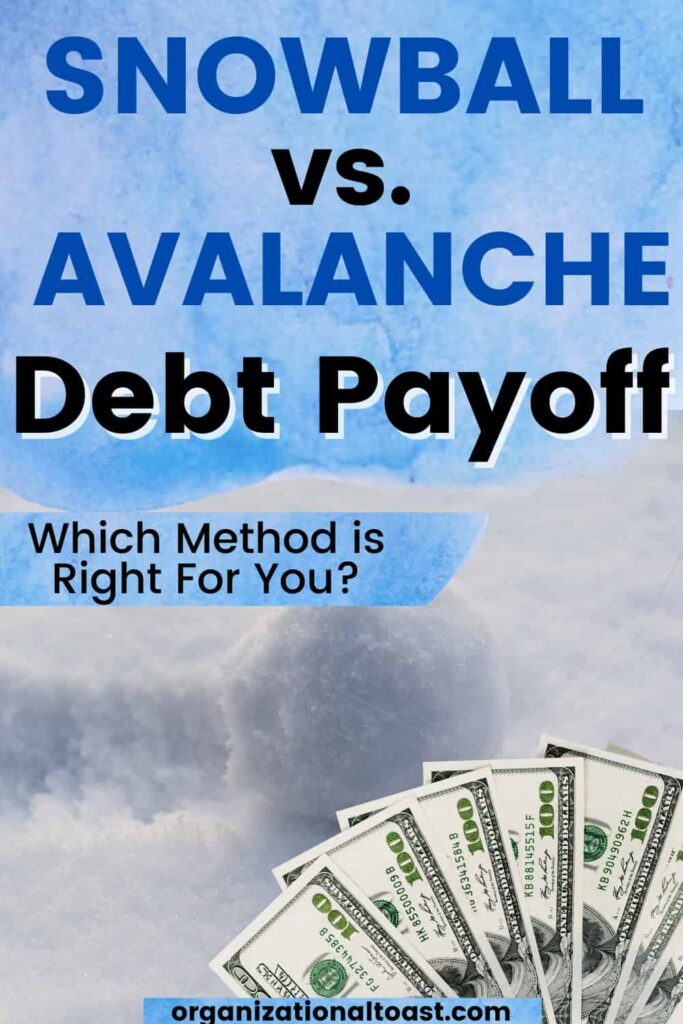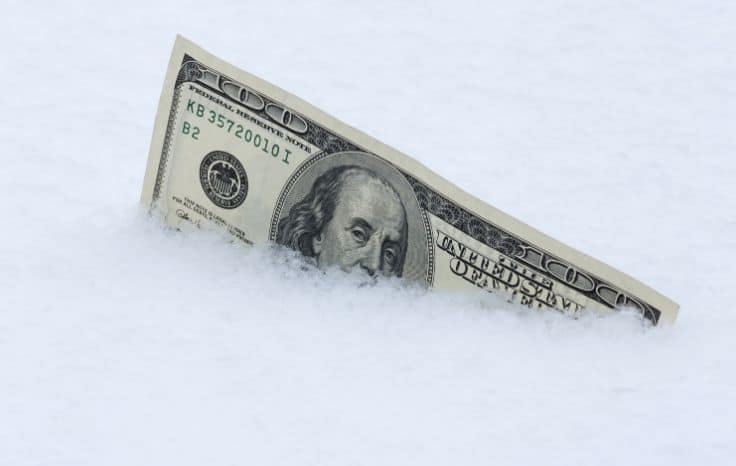Sharing is caring!
Paying off debt is one critical way to begin building greater financial stability and freedom. Consumer debt has reached some of its highest levels in recent years, with more and more American families struggling to pay down their debts.
According to Wallet Hub, “Credit card debt rose by $76.7 billion during 2019, and WalletHub now projects a decrease of about $89 billion in 2020.”
Credit card debt isn’t the only debt weighing on many Americans. Student loans, car loans or medical bills all contribute to the growing number of families struggling with overwhelming debt.
Facing debt is a daunting challenge and can leave many people paralyzed against it.
But paying down debt is possible, even on a low income (read this inspiring debt free on a low income success story). It’s a long term game that requires planning and thoughtfulness.
There are two popular strategies for paying down debt: The Snowball Method and The Avalanche Method.
Both methods require that you make a list of all your debt and continue making minimum payments while focusing on putting any extra money towards debt. The main difference is the order in which you pay down your debts.

The Debt Snowball Method
The Debt Snowball Method of paying off debt was made popular by Dave Ramsey and many people swear by this method.
The basic idea is to put any extra money you have to pay off your smallest debt without regard for the interest rate on the debt. Once the smallest debt is paid off, you take those payments and add them to the next lowest debt. As each debt is paid off, you roll those payments into the new debt.
Here’s an example. Let’s say I have the following debt:
- $900 No Interest Loan – $24/month
- $7,000 4% Car Loan – $150/month
- $12,000 19% APR Credit Card – $310
- $29,000 3.25% Student Loan – $369
Total Debt: 48,900
I’ve listed all my debts in order from smallest loan to largest. In this example, I’ll work to pay off the $900 loan first. Once the $900 loan is paid off, I’ll take the $24 a month payment I was making and apply it to the next debt on my list. This means I will begin paying $174 a month on my car loan ($24 + $150). Once I pay my car loan off I take the $174 a month payment and apply it to my monthly credit card bill meaning I’m now paying $484 a month on my credit card ($174 + $310).
Using the debt snowball method for this example will have you out of debt in 70 months and you will payback a total of $59,539 (according to MagnifyMoney Snowball vs. Avalanche Calculator). This is how long it will take if I only make minimum payments each month.
Why This Method Works
The main reason this method works for so many people is there is a strong sense of satisfaction when you pay down that first small debt. A quick win in the beginning provides strong motivation to keep going.
The Debt Avalanche Method
In the Debt Avalanche Method, you pay the debt with the highest interest rate
Using the same list of debt from the example above, with the Avalanche Method I would pay off my debts in the following order:
- $12,000 19% APR Credit Card – $310
- $7,000 4% Car Loan – $150/month
- $29,000 3.25% Student Loan – $369
- $900 No Interest Loan – $24/month
Using the debt Avalanche Method for this example will have you out of debt in 68 months and you will payback $57,828 in 68 Months, (according to MagnifyMoney Snowball vs. Avalanche Calculator). This is how long it will take if I only make minimum payments each month.
Why this Method Works:
Using the debt avalanche method will save you money on interest. You see in the above example that the debt avalanche method saves you $1,711 and gets you out of debt 2 months faster.
Snowball vs. Avalanche: Which One Is Right For You?
The bottom line is that both methods work. From the example above you can see that both strategies take about the same amount of time. With the debt avalanche method you’ll save a good chunk of change. However, that chunk of change amounts to around saving $25 a month.
When planning your own debt payment strategy consider whether those little wins with the snowball method are what you need to stay motivated or whether saving money on interest is more of a motivation.
Getting Started with Debt Payoff
Before you begin planning your own debt payment strategy, financial experts recommend beginning with these steps.
- Build an Emergency Fund – Having a small nest egg to help with financial emergencies will help keep you on track for debt repayment. Read more about starting an emergency fund here
- Create a Budget – Figure out your monthly expenses and see if you have extra money to pay towards whichever debt you pay off first. Read more about creating a budget here
- Make a list of all your debts – In a spreadsheet or with paper and pen, sit down and right out all your debts, their interest rate and the expected payoff date.
- Find ways to stay motivated – Download this Free debt tracker to help you stay motivated!
Summary
Whichever method you choose, debt payoff is a long term game that requires planning and commitment.
Keeping track of your monthly finances, celebrating each win and focusing on life without debt will provide the motivation and stamina needed to pay off debt.




